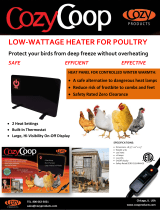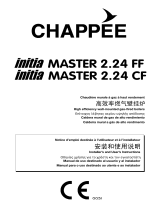
14
3062555_201507
Installation
Note:
Provide a BDF valve at the lowest system point.
Information on scaling
Scaling can be strongly inuenced particularly through the
method of commissioning. Heat the system at the lowest output
with an even and adequate throughput. For multi-boiler systems
it is recommended to commission all boilers simultaneously to
prevent the overall amount of lime concentrating on the heat
exchanger surface of an individual boiler.
The minimum system pressure is 1.0 bar.
The gas condensing boiler is approved exclusively for sealed
systems of up to 6 bar. The maximum ow temperature is
factory-set to 80 °C and may be adjusted to 90 °C if required.
Generally, the ow temperature is 80 °C for DHW operation.
Safety equipment
Heating water
The maximum ow rate must not exceed
6000 l/h (100l/min).
Before commissioning, all hydraulic pipes must
undergo a tightness test:
Test pressure on heating water side max. 8 bar.
Prior to testing, close the shut-off valves in
the heating circuit for the appliance, because
otherwise, the safety valve (accessory) opens
at 3 bar. The appliance has already been tested
at the factory for tightness at 6 bar.
If the appliance is not watertight, there is a risk
of leaks and resulting material losses.
With a specic system volume of >50 l/KW the total degree
of hardness must be adjusted to 2-3 °dH using a desalting
process.
General requirements
There is a danger of damage to the wall-mounted
boiler leading to the escape of water, poorer heat
transmission or corrosion.
- The heating system is to be ushed through before the
connection of the wall mounted gas condensing boiler in
order to remove residues from the pipework such as welding
sputter, hemp, putty, sludge deposits etc.
- Installation of a sieve/dirt trap in the return and regular
maintenance of the sieve / dirt trap; see Wolf accessories
(5 μm).
- The automatic vent of the appliance must be open during
operation
- The max. air volume of 100 l/min (6000 l/h) may not be
exceeded
- Potable water or saline-free potable water is to be used as
lling and supplementary water. The hardness of the system
water may not fall below 2 °dH. The system-specic lling
and supplementary water qualities are to be taken from the
section ‘Water treatment planning notes’.
- A hydraulic separator must be provided for if the entry of
oxygen cannot be excluded
- The pH value of the heating water must lie between 8.2 and 8.5
- In general, lling and supplementary water must be submitted
to a desalization; softening via a single-stage ion exchanger
is not permissible. The permissible methods and limit values
are to be taken from the section entitled ‘Water treatment
planning notes’ (ATTENTION: the limit values are plant-
specic)
- Inhibitors and anti-freeze are not approved.
- A system logbook is to be maintained; see ‘Water treatment
planning notes’
After proper lling of the system the system must be heated to
the maximum and the total hardness and pH value measured
again or adjusted. These values must be checked again and
adjusted after 6-8 weeks.
Additional requirements for operation without low-loss
header
- Systems with only one CGB-75/100
- Sludge separator in the appliance return of the CGB-75/100
- Desalization of the heating water to 2 - 3 °dH
- Control of the calorier charging only via the MM module
(congurations 1 and 10)
- Charging pump at least DN 25 with a lifting height of at least 6 m
- The max. inlet temperature must be set to 75 °C with the
parameter HG08
The water treatment planning notes must be
observed, as otherwise damage to the system
may occur leading to the escape of water.
The manufacturer cannot accept any liability for damage to
the heat exchanger resulting from oxygen diffusion into the
heating water. In the case that oxygen can penetrate into the
system, we recommend a hydraulic separator by installing an
intermediate heat exchanger.
Note from VDI 2035
Limescale formation can be inuenced above all through
the type and method of commissioning. Heat up the system
at the lowest power with an even and sufcient ow rate. In
the case of multi-boiler systems it is recommended to put
all boilers into operation at the same time so that the total
amount of lime cannot concentrate on the heat transfer
surface of an individual boiler.





















